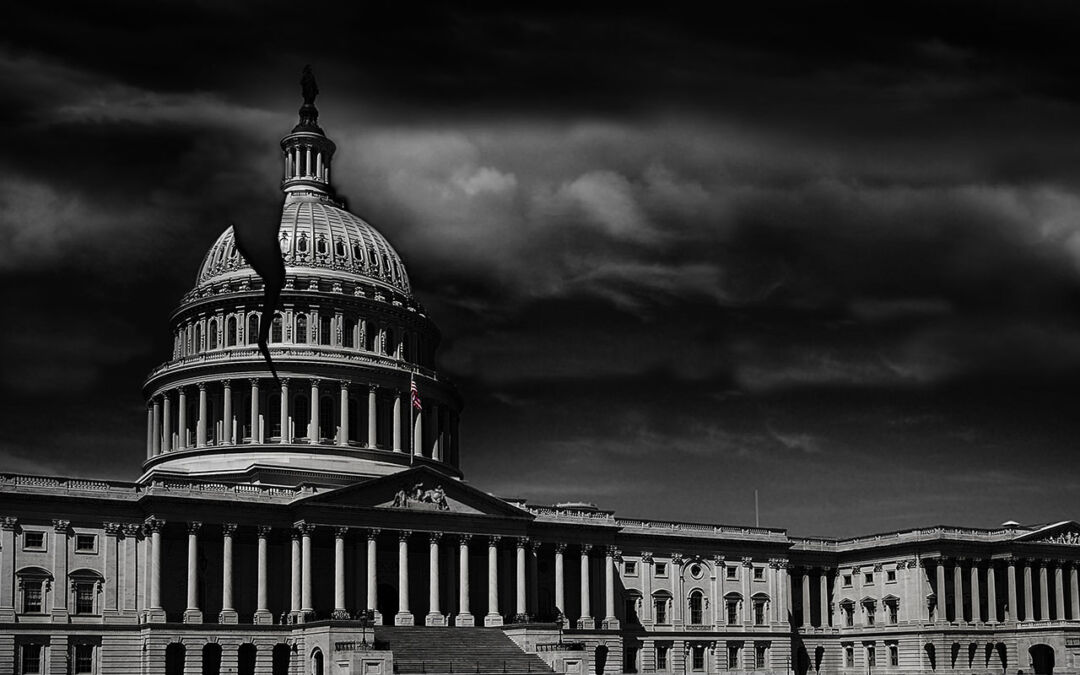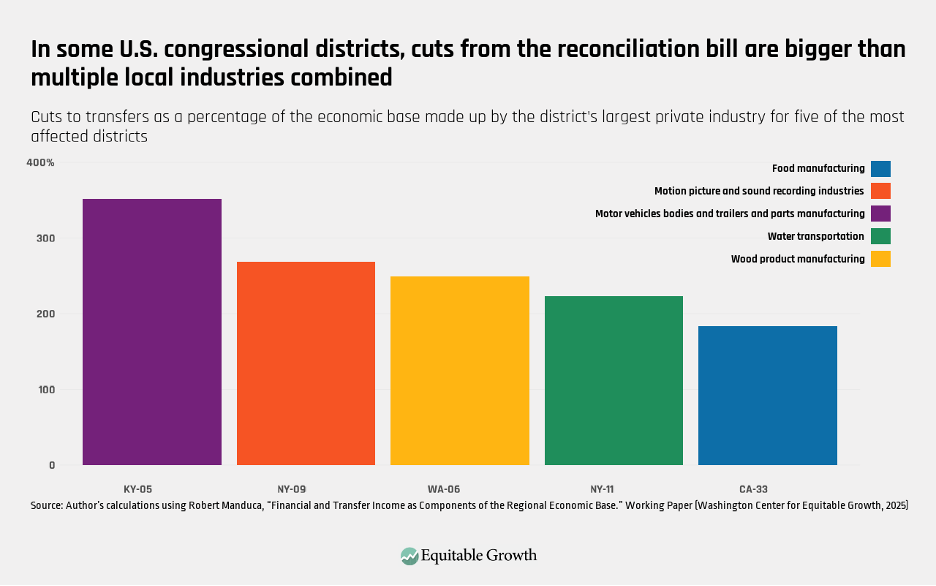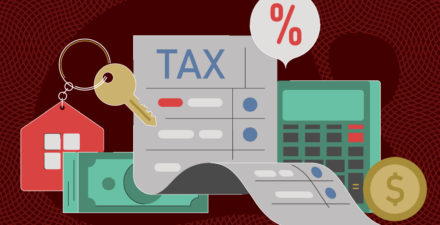The 10 worst policies for equitable economic growth in the 2025 budget reconciliation law

The 2025 budget reconciliation law that was enacted earlier this month is a sprawling piece of legislation, touching almost every corner of the federal budget and the U.S. economy. It will take years for all the consequences of the law to be fully felt and understood.
A preliminary economic analysis, however, reveals 10 especially harmful policies that were included in the final bill and which run counter to the evidence on what spurs equitable economic growth. Below, we detail each of them and their implications for Americans and economic growth over the next decade and beyond.
Phony populism
Though the so-called populist tax provisions in the new law—partial deductions for tip income, overtime income, auto loan interest payments, and a larger standard deduction for some seniors—got a lot of attention, they are overly complicated, will benefit few U.S. workers, and will expire after 2028. These tax provisions are not pro-growth because very few workers will be able to work more in order to qualify (find a job in the right industry, for instance, or have the right amount of income and tax liabilities, and have control over their hours and pay).
In fact, by making these provisions effective in 2025, the bill’s authors are rewarding economic decisions that have already been made—the definition of a tax windfall—which simply generates a (small) political treat for favored constituencies. That is, of course, assuming an under-resourced IRS can quickly get these policies up and running while protecting against any game-playing, including attempts to recategorize ordinary income as tip income, which will be a challenge.
Slashing the Affordable Care Act
The 2010 Affordable Care Act ushered in a new era for health care in the United States: protection for those with preexisting conditions, state marketplaces with affordable insurance options, and an expansion of Medicaid. The result was near-universal coverage and a bent cost curve, freeing up space in families’ and governments’ budgets for other productive investments.
While the ACA insurance reforms and marketplaces are both still intact, the reconciliation law cut Medicaid by $1.15 trillion, a 15 percent reduction in federal spending on the program. Enhanced premium tax credits for marketplace plans also were allowed to expire, which will lead to a spike in premiums for millions of middle-income families. These provisions will lead to an estimated 16 million Americans losing their health insurance coverage over the next decade—11.8 million from Medicaid cuts and 4.2 million from the failure to extend the premium tax credits.
Increased hunger
Similar to the Medicaid cuts, the reconciliation law severely curtails the federal government’s contribution to the Supplemental Nutrition Assistance Program, which, in 2023, provided food stamps to an average of 42 million Americans per month. It is unlikely that states will be able to make up for the $186 billion reduction in federal aid. The official estimate is that more than 22 million families will lose some or all of their SNAP benefits, effectively raising food costs for many families already struggling under high prices.
It is not just SNAP beneficiaries who will suffer; their local economies will feel the ramifications as well. Recent research from Equitable Growth grantee Robert Manduca of the University of Michigan finds that nutrition assistance and Medicaid are a major contributor to the economic base of local communities, or the portion of its economy that brings money into a region from the outside world and then circulates locally, creating jobs and additional economic activity.
Indeed, Manduca finds that the cuts in the reconciliation bill are the economic equivalent for many states and congressional districts of losing a big chunk of their largest private industry. (See Figure 1.)
Figure 1

Large tax cuts for the wealthy
Instead of using the savings from cuts to Medicaid and nutrition assistance to, say, pay down the multitrillion dollar federal debt, the law uses the money to partially offset a huge tax cut that disproportionately benefits the rich. The bill’s authors in the Republican-led U.S. Congress didn’t just extend the expiring provisions of the 2017 Tax Cuts and Jobs Act, which was the stated rationale for the reconciliation bill, but instead went on a tax-cutting spree, doling out more than $5 trillion in tax cuts over the next 10 years—not including the added cost of interest payments on the debt or the potential cost of a future Congress extending temporary tax breaks, which often happens.
The signature provision was a $2.2 trillion cut to marginal income tax rates. The top bracket, for example, is now permanently set at 37 percent, rather than the 39.6 percent from the Obama and Clinton eras. Indeed, the richest Americans are some of the law’s biggest winners. The average household in the top 0.1 percent of earners, making more than $2 million annually, will get a $308,763 tax cut in 2027. Millionaires receive 21 percent of the tax benefits that year, which amount to more than $113 billion—roughly equal to the average annual cut to Medicaid.
This combination of tax cuts for the tippy top of income earners and spending reductions for programs that aid low-income Americans makes the new law the largest upward transfer of wealth in a tax and budget bill in at least the past 40 years.
Indefensible tax giveaways
The budget law also gifted the wealthiest Americans additional, completely unjustified hand-outs. Three of the most egregious examples, which Equitable Growth has written about elsewhere, are a permanent extension of the 199A qualified business income deduction, a permanent increase in the estate tax exemption, and an enhanced qualified small business stock exclusion. Almost all of the benefits of these three policies—which have a total combined cost of $966 billion—accrue to those in the top decile of income earners, and a large majority of the benefits go to the top 1 percent.
In particular, pass-through business owners, including venture capital investors, are some of the law’s biggest winners, since they are uniquely positioned to take advantage of these tax breaks. What’s more, the two most concrete proposals from President Trump on raising taxes on the rich—crackdowns on the carried interest loophole and on a tax break used by owners of sports teams—both fell out of the final bill.
Even worse, while the law severely restricts eligibility for many social programs, creating onerous layers of administrative burdens, the legislation’s authors made qualifying for these tax breaks easier for the rich. Their explanation is that these cuts will spur investment and eventually trickle down to workers, but these views fundamentally misunderstand how economic growth works.
Budget gimmicks
While the sausage-making of legislating has always been messy, the Republican-led Congress took an especially untransparent approach to this law that will likely further erode adherence to institutional norms and ultimately reduce trust in Congress. Most notably, the Senate deployed a novel “current policy baseline” to fraudulently conceal $3.8 trillion in tax cut extensions. This unprecedented abuse of the budget reconciliation process—a process originally designed to reduce long-term deficits—paves the way for a permanent deficit-financed tax cut that will heighten the fiscal risk facing the nation for decades to come.
These and other budget gimmicks send an unfortunate signal to investors and consumers here and abroad about the United States’ ability to responsibly manage its fiscal affairs and remain the leader of the global financial system.
Underappreciated macroeconomic consequences
There has been a lot of focus lately on the Federal Reserve keeping interest rates elevated because of inflationary pressure from tariffs. Meanwhile, there has been less attention on how a budget bill that adds $3.4 trillion to the deficit over the next 10 years will also put upward pressure on prices and could cause even higher interest rates. Spending on this scale while the U.S. economy is at near full employment is a recipe for a short-term economic sugar-high but long-term weakness.
This is just one reason why economic modelers don’t expect the tax cuts to be pro-growth—despite their proponents’ arguments—because any increase in economic activity will be counteracted by the risk of inflation and the Fed reacting accordingly by raising its prime rate. As much as President Trump wants Fed Chair Jerome Powell to lower interest rates, in the face of tariffs and a massive tax cut, the Fed’s hands will be tied.
At the same time, the reconciliation law provides roughly $170 billion for the Trump administration’s mass deportation efforts, including an unprecedented budget increase for U.S. Immigration and Customs Enforcement. Economic evidence demonstrates a labor force contraction of the scale currently planned by the Trump administration will have negative effects on native-born workers and the economy as a whole, reducing total employment and economic growth.
Missed opportunity on child care
The Section 45F tax credit for employer-provided child care is a flawed policy that has not effectively expanded access to affordable child care. Fixing the broken child care market in the United States requires more than an employer subsidy or a modest and selective increase in the Child Tax Credit. Rather, a comprehensive approach that includes higher wages for child care workers and more high-quality child care facilities is needed.
Unfortunately, the budget law makes just a few small improvements to the 45F tax credit and to the nonrefundable Child and Dependent Care Tax Credit, as well as expanding a different tax credit for paid family and medical leave—a woefully inadequate effort for addressing the scale of the problem.
Encouraging outsourcing
Despite all of President Trump’s rhetoric on tariffs and trade, his signature legislative initiative undermines domestic production by loosening tax penalties for profit shifting by multinational corporations. The law does include a complicated and temporary deduction for new U.S. factories, but that provision is unlikely to lead to the onshoring of much manufacturing given the law’s other global tax provisions, including permanent expansions of certain tax deductions for foreign income.
One especially clear example of how this works is in the pharmaceutical industry, which took advantage of outsourcing loopholes embedded in the 2017 Tax Cuts and Jobs Act. Loosening taxes on outsourcing is part of this administration’s larger, misguided goal of unwinding the global tax deal negotiated by the Biden administration, which would have created a long-overdue global minimum tax on multinational corporations.
Politically targeted ‘pay-fors’
Despite the reconciliation law being an overall tax cut,some unlucky constituencies will see their taxes raised by the legislation. These politically targeted “pay-fors” include research universities, legal immigrants, blue-state homeowners, and clean energy producers, investors, and consumers.
Perhaps the most destructive of these tax increases are those targeting Biden-era clean energy tax credits. Though saving some money in the short run, conceding a major front in the fight against climate change will likely cost the country dearly over the long term.
It doesn’t take a degree in political science to see the pattern. Nor does it take a degree in economics to know that designing tax policies purely to score political points is bad for both equity and growth.
Conclusion
From the beginning, this piece of legislation was built on the false premise that the 2017 Tax Cuts and Jobs Act—and the many regressive tax cuts that came before it over many decades—spurred economic growth. But any policymaker who still believes that is ignoring the economic evidence, which has definitively shown that these kinds of lopsided tax cuts neither pay for themselves nor boost wages, despite continued claims to the contrary.
Yet pro-growth tax reform is possible. The expiration of many of the 2017 tax cuts this year presented a unique opportunity to write a simpler and more equitable tax code that raised needed additional revenue while encouraging economic competition and innovation that boosts productivity and growth. This budget law moves in the opposite direction on every front, with the 10 policies above leading the way.
Did you find this content informative and engaging?
Get updates and stay in tune with U.S. economic inequality and growth!







Stay updated on our latest research